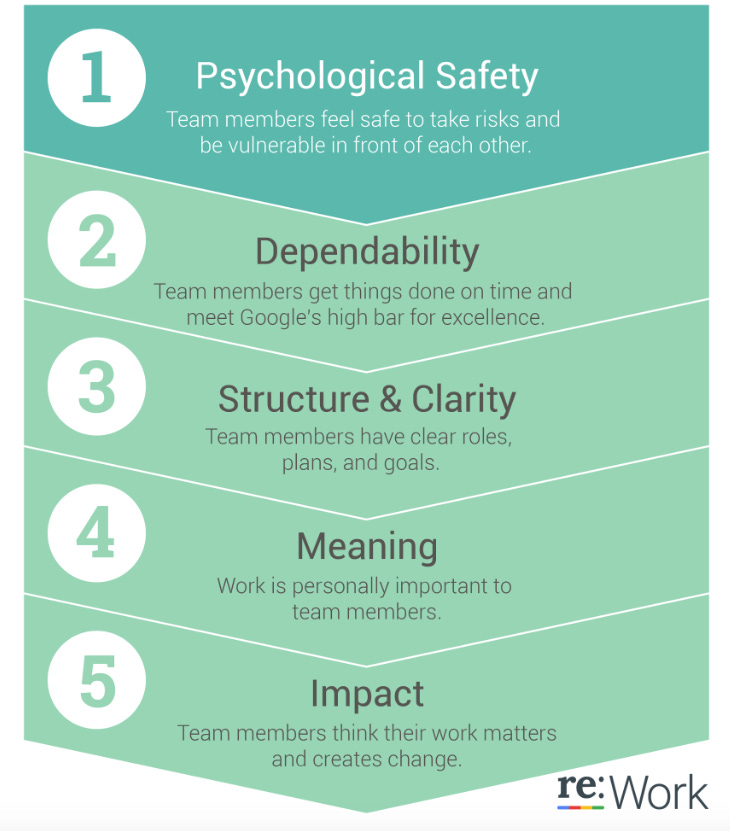RDEL #69: What are top social drivers of performance in engineering teams?
A look at four drivers that can indicate performance on engineering teams.
Welcome back to Research-Driven Engineering Leadership. Each week, we pose an interesting topic in engineering leadership and apply the latest research in the field to drive to an answer.
To understand the performance of a software engineering team, technical and social drivers are commonly used. While technical drivers are more commonly discussed, social drivers are just as vital. This week we ask: which social drivers most indicate performance of engineering teams?
The context
Understanding team performance requires examining both technical and social drivers, as each plays a critical role in fostering a productive engineering environment. While technical metrics such as code quality, deployment frequency, and system reliability are more commonly emphasized, the research consistently shows the profound impact of social dynamics on team outcomes. For instance, studies from Google’s Project Aristotle show that psychological safety—the belief that team members can take risks and express ideas without fear of judgment—is the top predictor of team success.
This edition of RDEL is adapted from a keynote conversation at QCon (also hosted today in SF!), in which our team collaborated with researchers to share an overview of the top social drivers of performance in software engineering teams.
The research
The TAPPs framework - named for trust, autonomy, purpose, and psychological safety - represents the top four social drivers of performance in software engineering teams. The framework is as follows:
Trust
What it is: The belief among team members that each person will reliably contribute, communicate openly, and support the shared objectives.
Why it’s important: Trust unlocks open communication, faster problem solving, and less rework.
The research (previously covered in RDEL): In 2019, researchers at Google designed a survey that asked 622 developers across 3 companies about these productivity factors and about self-rated productivity. The results suggest that the factors that most strongly correlate with self-rated productivity were non-technical factors, such as trust, job enthusiasm, and peer support for new ideas. Of the top ten most-important factors, 40% of them related to trust in their peers and environment.
Autonomy
What it is: The ability of software engineers and teams to make decisions independently regarding their work.
Why it’s important: Autonomy empowers engineers to make decisions and solve problems faster.
The research (previously covered in RDEL): Researchers at Microsoft ran a broad organizational study with a combination of 563 engineers and managers to prioritize a list of the top 15 attributes for a great engineering manager. The results showed that “enables autonomy” was #3, only behind “positive work environment” and “grows talent”.
Purpose
What it is: A clear, shared understanding of why the team’s work matters and how it aligns with broader organizational goals.
Why it’s important: Purpose aligns engineers’ work to the customers they serve.
The research (previously covered in RDEL):
The 2024 DORA report surveyed over 39,000 technical professionals on key performance metrics like software delivery, productivity, and team dynamics. They found that on teams with high user-centricity, stability and quality are not a determinant of product quality. Researchers hypothesized this is because when teams have a high sense of purpose, they will consistently align their work towards the users that they serve and achieve high product performance.
Psychological safety
What it is: A shared belief among teammate that they can take interpersonal risks—like speaking up, asking questions, or admitting mistakes—without fear of negative consequences.
Why it’s important: Psychological Safety enables risk-taking, honest communication, and greater innovation.
The research: In 2013, Researchers at Google analyzed over 180 teams within the company to find the factors that make teams successful, using surveys, interviews, and data analysis to evaluate various team dynamics and behaviors. The key finding was that psychological safety—where team members feel safe to take risks and voice opinions without fear of criticism—was the most important predictor of a team’s effectiveness, followed by factors like dependability, structure and clarity, meaning of work, and impact of work.
The application
The TAPPs framework is meant to provide a simple, easy to remember framework of the most important (and research-backed) social drivers on engineering teams. By capturing these dimensions, engineering leaders can get a more comprehensive picture of their teams performance. More importantly, they can establish a baseline with which to improve on.
To make use of the TAPPs framework, we recommend the following steps:
Build a process to reliably measure TAPPs over time
Use anonymous, aggregated surveys to capture these data points on a regular cadence. A monthly or quarterly cadence will allow teams to establish a good baseline and understand how those dimensions change over time.
Review the data regularly, with curiosity
Use the data as a starting point to understand the “why” behind the trends. Prioritize change over time, instead of zeroing in on a single data point.
Drive actions and improvements
By using the data to drive changes, the team begins a flywheel from measuring data → analyzing changes → making improvements, and again.
—
If you liked this paper and want to learn more, feel free to use this free resource guide which contains survey questions for measuring each dimension of the TAPPs framework. Wishing you a great week!
Lizzie







